The hum of the city
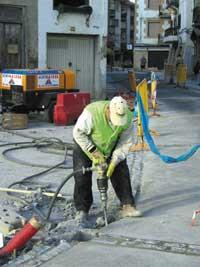
Noise pollution is a new term. Who would say a few years ago that noise is pollution? The concept itself is more difficult to assimilate than that of air or water pollution. The noise is so subjective.
Imagine that for those who have the habit of putting high music at home this sound is pleasant, but the opinion of neighbors and neighbors who can not support it is very different. Something similar happens with urban noise. Many consider it unsustainable, especially when it comes to sleeping, while others seem not to hinder them and do so as part of the environment.
Noise has become a problem in urban areas. Although it was previously considered an essential consequence of development, today citizens increasingly complain about the noise of the street. In view of this, the European Union has published a noise regulation directive and, little by little, the countries that comprise it are adapting to national legislation.
The new law has had great fame, especially because it forces cities of more than 250,000 inhabitants to make noise maps. Although they have done so in many cities, by June 2007 everyone will have to do so, even in the ten states that are about to enter the Union.
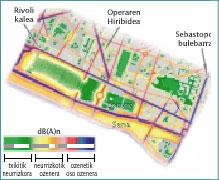
For non-experts in acoustics, the behavior of sound diffusion is clarifying: it spreads through the air, bounces on the walls, enters through any slit... Therefore, noise maps allow the citizen to see the noise. The representation on paper of urban noise facilitates citizen perception of the state of the places they know in relation to noise pollution.
Noise in maps
A sound meter is used to measure street noise. This instrument has a decibel unit and so that it can be used on the noise map is passed to the equivalent noise level.
For local cases, a decibel adapted to the human ear, dB(A), is used. In fact, the sonometer can record sounds of all frequencies and only the frequencies that man can hear are useful.
The higher the noise, the more decibels are expressed, but the relationship is not linear. For example, when the noise level doubles, it only raises three decibels. In turn, otherwise, if the noise generated by traffic is 70 dB(A), reducing the number of vehicles by half, the number of decibels is reduced only to 67 dB(A). This shows the difficulty of reducing urban noise decibels.
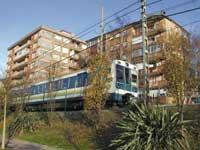
However, for the realization of current noise maps, few measurements are made with the sonometer, and only in cases where necessary, the technician goes to the noise source through the noise measurement tool, such as leisure areas or urban workshops.
Normally the data that the City Council has and the map is composed of a computer program are used. It takes into account, among other things, the relief of the city and the situation and height of the buildings, being able to include the climate as variable.
For example, to include in the map the noise produced by a road, we take into account the number of vehicles that circulate on the road at different times of the day and its speed. The sonometer can be used to check the conclusions obtained by the mathematical model of the map. But in very few cases it is necessary. The results obtained through noise maps are very accurate.
Basque Country
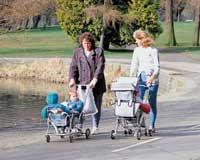
The new European law only affects Bilbao, the only city in the Basque Country with more than 250,000 inhabitants. However, it is expected that the smaller cities will soon have to make noise maps.
However, before knowing the directive, noise maps have been made in numerous areas of the Basque Country. This is the case of Pamplona, Bilbao, Barakaldo, Gernika, Irun, Donostia and Vitoria-Gasteiz, among others. Noise maps of the non-urban road and railway network of the Autonomous Community of the Basque Country have also been developed. Now these maps must be adjusted to the methodology that has just been implemented.
The Basque Country is generally quite noisy, and noise maps can be very useful in determining what actions should be carried out to reduce this pollution.
Decision-making tool
Noise maps allow comparing urban noise with land use in each location. Depending on their use, the established noise limits are different. For example, in hospitals and schools the limitations are lower than in the rest of the city, as patients need a healing break and students a silence to be attentive in the classroom. However, absolute silence is impossible, as many hospitals and schools are in the center of cities, and are forced to withstand the noise of surrounding traffic, people and street repairs, among others.
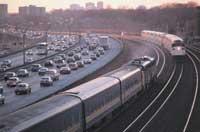
In addition, the map houses are located and the number of inhabitants of each neighborhood is taken into account to calculate the impact of each noise source. The more data available, the easier it is to set priorities, which helps make the most appropriate decision.
In general, noise maps perform a double function: on the one hand, they are understandable by the citizens and, therefore, they report; on the other, they are interactive, that is, they have variables, modifying which the variation of the noise level is appreciated.
In case you want to place screens on the edge of a road so that less noise reaches the adjoining neighborhood, on the map the screen is placed and the program calculates the new situation, that is, the number of decibels in which the noise reaches the houses of the neighborhood, parks, etc. This allows you to know how much the situation will improve before you make a project, and when there is more than one opportunity to choose the most appropriate one or decide whether it is worth carrying it out.
Harmful to health

But the directive has not clarified all doubts about noise pollution. To do this, the corresponding regulations must be published. The regulations should explain, among other things, the harmful effects on noise health. Citizens are beginning to worry because the noise they endure daily will not hurt them.
Noise has been shown to have health effects and damage depends on noise intensity and exposure time. Excessive noise can cause, among other things, decreased hearing and loss, but also stress, abdominal pain, difficulty sleeping and other discomfort.
The impact of noise on humans is greater than expected and, once and for all, has become a source of pollution. Unfortunately, especially in cities, it is intimately linked to our way of life and we should radically change noise reduction habits. And yet where there are collectives there will always be noise.
When talking about urban noise, the first thing that comes is traffic. And no wonder. The noisy areas of the city are those of high traffic, and it cannot be forgotten that traffic noise affects the majority of the population, except everyone. In fact, according to the old urbanism, the main roads passed through the interior of the city. With the passage of time, noise, air pollution and other problems that generated these roads have forced to leave the city.
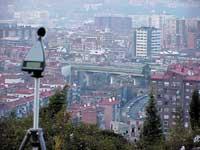
But in addition to road traffic, there are other means of transport that make silence difficult. The train and the plane affect on average fewer citizens, but normally the discomfort they generate is more serious because the noise is discontinuous and very strong.
The noise pollution of the urban industry is also worrying. The first solution is the exit of the noise generating industry outside the city, but when this is not possible, the administration should force to use the quieter machines and work with closed doors and windows.
However, the source of noise that causes the most complaints is not traffic, nor urban workshops, but the ones that cause the most discomfort are, without a doubt, leisure and recreation spaces. The conflict is mainly due to the schedule, since during the night of the evening increases the noise of bars and similar places, and it must be taken into account that it is time to rest or sleep for most citizens.
In terms of specifications, the main objective of the European directive is to maintain the same standard in all countries in terms of noise, so it is necessary that the instruments used to measure and evaluate are equal or equivalent for all. There was no debate before the law was passed. The biggest controversies occurred in establishing noise limits. In fact, the peoples of the Mediterranean area did not admit to using the same schedule as the northern peoples. It is clear that in everyday life the schedule of citizens of each other is very different; at nine o'clock in the night the atmosphere that occurs in the streets of Oslo is difficult, for example, that of Milan. Therefore, there has been a difference of two hours for each municipality to establish the limitations according to the schedule that it considers most appropriate. On the contrary, the villages of northern and southern Europe do not only distinguish schedules. The difference is also remarkable in noise levels. For example, in Spain, England and the Netherlands, 50% of the population is exposed to daytime levels above 65 dB(A), while in Norway, Sweden and Finland only 20%. The difference is enormous. |





